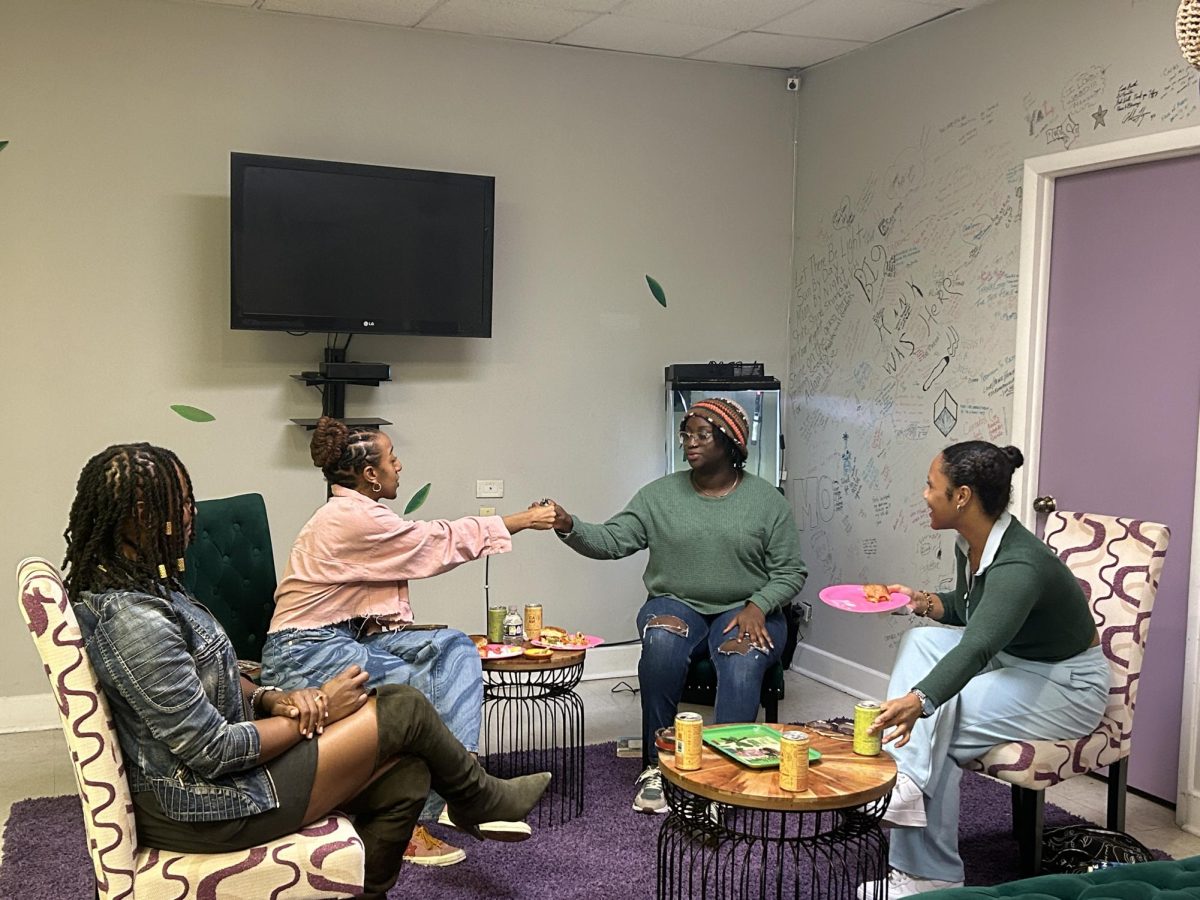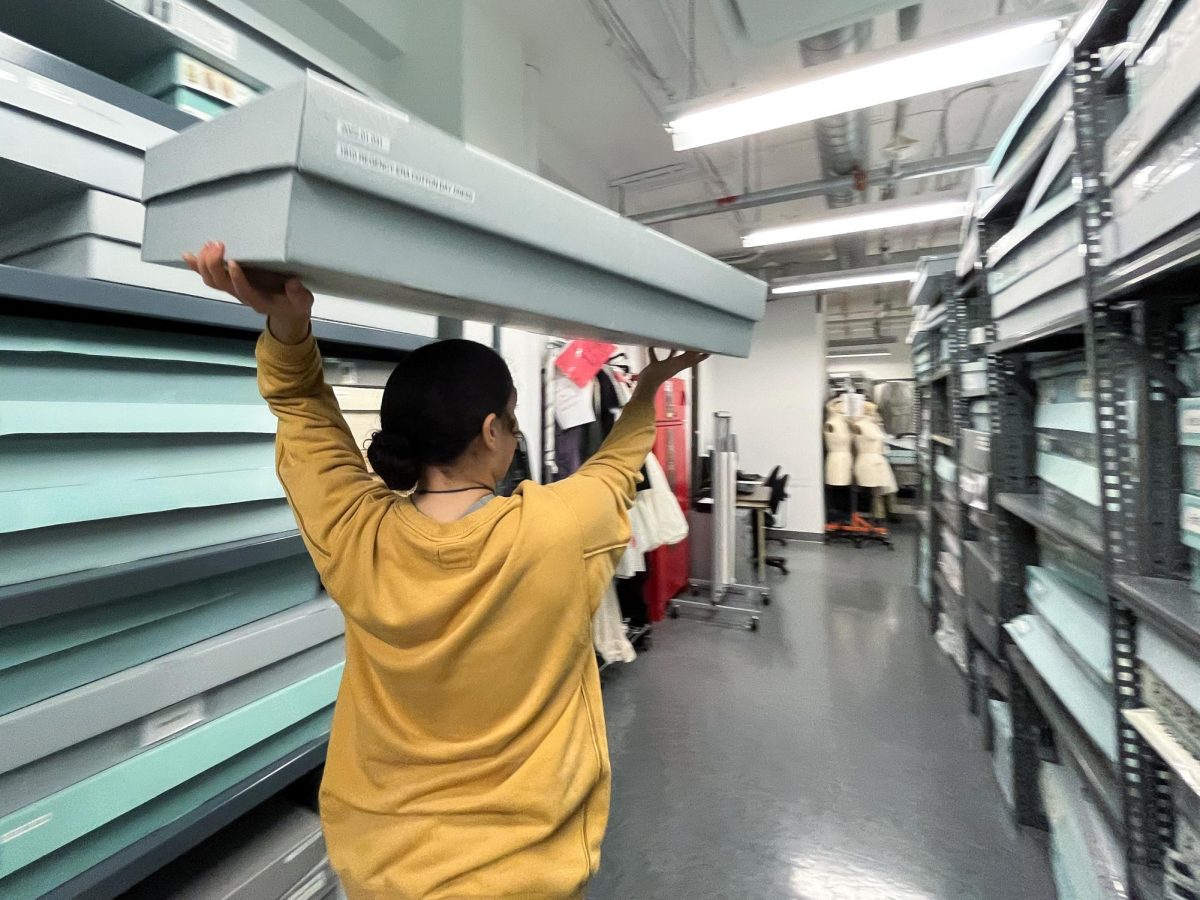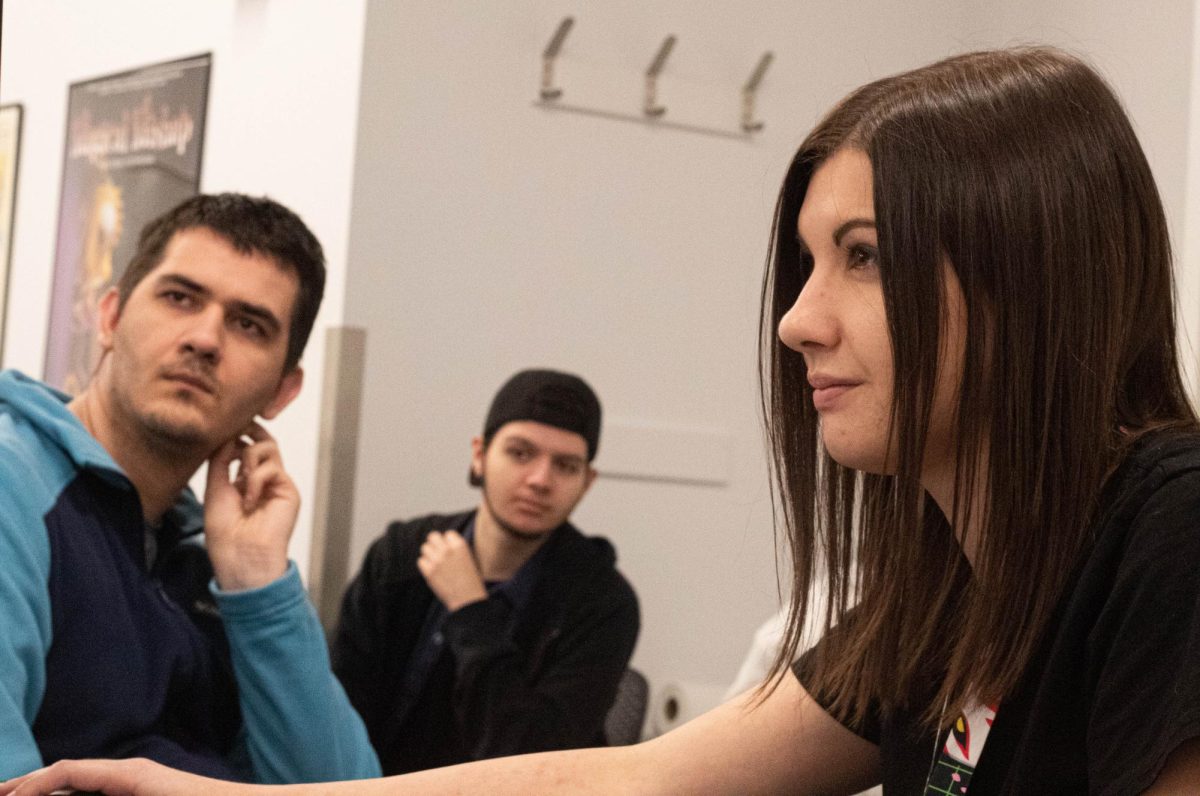Inspired by their grandmother, Lou Baggett, a junior theatre design and technology major, tells the Chronicle about their role as costume designer for Columbia’s mainstage production of “Hair.”
It took six months of planning and three months to sew and build nearly 50 costumes for the fall musical.
Now, the costume shop is moving on to work on the mainstage shows for the spring semester, “You on the Moors Now” and “Rent.”
Copy edited by Trinity Balboa
TRANSCRIPT
0:00: –Sitar. Life is around you and in you.
0:06: Answer for Timothy Leary, dearie.
0:10: My Nonna was a tailor and she sewed her whole life and I was very interested in clothings because of that.
0:19: I used to hear stories that the other ladies at her work used to get mad at her because she was so good at her job.
0:24: My name is Lou Baggett.
0:26: I’m the costume designer for Hair.
0:28: I was the costume designer for Hair.
0:30: I kind of wanted to explore the side of hippies that weren’t as costume-y because I feel like hippies now are like, people dress up as them and they’re very much costumes.
0:39: And I was kind of interested in the real youth of that time.
0:45: I had to work with the costume shop to create the designs and we originally thought that Hair wasn’t going to be a build show,
0:51: so we wouldn’t have to build anything, but that was a lie.
0:55: We- we- we misjudged. We built a lot of costumes for this show. This show wouldn’t have happened without my assistants.
1:03: Eel and Keelano were my two assistants.
1:06: The costume manager is the one that I kind of talk to.
1:10: I’m like, ‘Here are the builds.’
1:12: We have meetings every week.
1:13: Like, ‘This is what I want to do,’ and then there’s the shop employees which Clare assigns tasks for them to do.
1:21: You really got to keep in mind the labor that you’re kind of putting onto the shop,
1:25: and I would also say just like making sure my requests are feasible for them to do, not really throwing so much at them.
1:37: We’re also probably the designer that works with the actors the most and I have to have a close relationship with the actors so they can eventually trust me and see my vision.
1:51: David came to me, the director, and was like, ‘For the main principals like this is how I see- this is what the colors I want to be incorporated in their costumes,
2:00: like you just go and you do it.’
2:01: I really think I did a really good job in using my- in the- the color that David wanted.
2:07: I’m very proud of the principal actors.
2:10: I spent a lot of time on them and thinking about what they would wear.
2:15: And I would also, yeah, I would say that and also like, I don’t know the fact that I, like I did it.
2:22: I’m very proud of myself.
2:23: It was very hard.
2:24: I think I did the best I could and how I got taught to execute a mainstage and do this big of a musical.
2:32: Hair was like an insane amount of people,
2:35: and whenever I see the principals lined up, I just like, think back to me spending nights at my drawing table just drawing and experimenting with things and it’s, it’s kind of crazy.
2:49: It’s- it feels like an animation,
2:51: like somebody took this piece of paper and created it in real life and it’s a real person.
2:55: Like, if I can do the show I can do anything.
2:57: I was like, I can do anything. I can do, like, whatever I set my mind to.
Copy edited by Trinity Balboa













